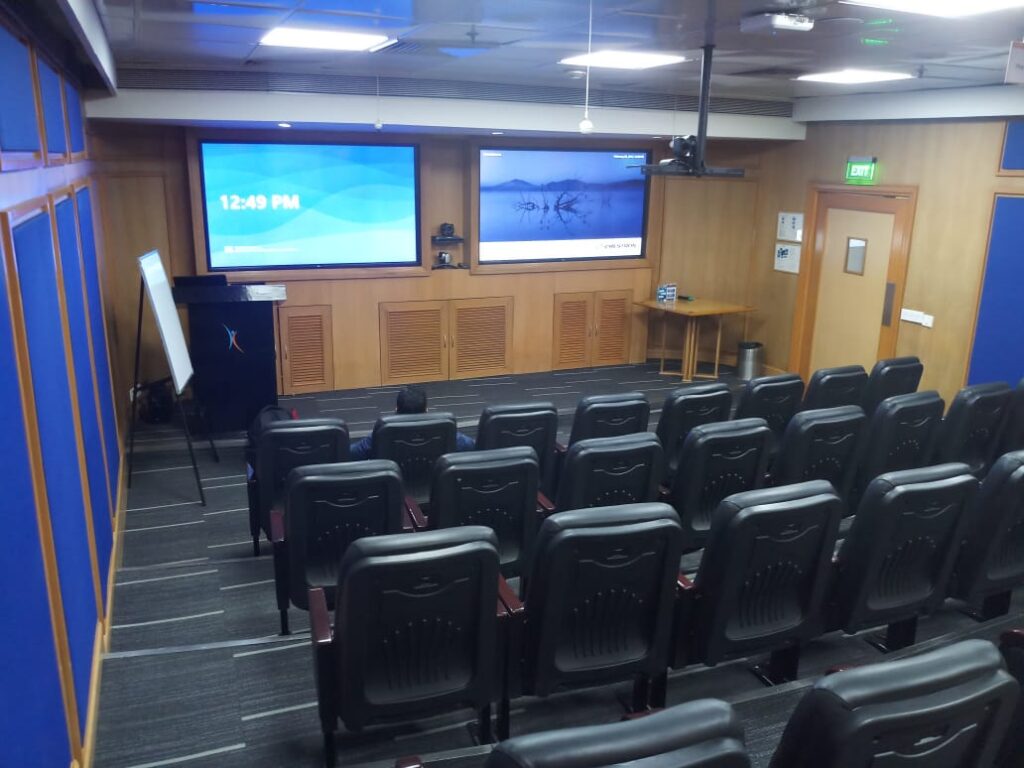5 Essential Tips for Designing a Versatile Multi-Purpose Hall
5 Essential Tips for Designing a Versatile Multi-Purpose Hall

Designing a multi-purpose hall requires a careful balance of functionality, flexibility, and aesthetics. Whether it’s for community events, conferences, sports, or performances, the space needs to accommodate a variety of activities seamlessly. Here are five essential tips to consider when designing a multi-purpose hall.
- Prioritize Flexibility
The core of a multi-purpose hall is its versatility. To achieve this, the design should include elements that can be easily adapted to different uses. This could involve:
- Movable Walls and Partitions
Installing movable walls or partitions allows the space to be divided into smaller rooms for concurrent events or combined into a larger area for bigger gatherings. Modern partition systems can provide excellent sound insulation and can be easily operated by a small number of people.
- Modular Furniture
Invest in modular furniture that can be rearranged or stored away quickly. Stackable chairs, foldable tables, and modular seating can transform the layout with minimal effort, making the hall ready for anything from a seminar to a wedding reception.
- Retractable Seating
For venues that host performances or sports events, retractable seating can be a game-changer. It provides the necessary seating for spectators while allowing the floor space to be used for other activities when the seats are retracted.
2. Ensure Optimal Acoustics
Acoustics plays a critical role in the functionality of a multi-purpose hall. Poor acoustics can ruin an event, making speeches hard to hear and music sound distorted. Here are a few ways to address this:
- Acoustic Panels
Installing acoustic panels on the walls and ceiling can help absorb sound and reduce echoes. These panels come in various designs and can be chosen to complement the aesthetic of the hall.
- Soundproofing
Ensure that the hall is well-insulated from external noise. This can be achieved through soundproof doors, windows, and additional insulation in the walls.
- Adjustable Acoustic Systems
Consider implementing adjustable acoustic systems, such as curtains or banners that can be drawn or retracted to modify the acoustics according to the event’s needs.
3. Incorporate Advanced Technology
Integrating advanced technology can enhance the functionality and appeal of a multi-purpose hall. Here’s how to do it effectively:
- Audio-Visual Equipment
Install state-of-the-art audio-visual equipment, including projectors, screens, and sound systems. Ensure that these are easy to operate and compatible with various devices. Multiple screens or projection surfaces can help accommodate different event layouts.
- Lighting Systems
A versatile lighting system is crucial. Include programmable lighting that can be adjusted to suit different events, from bright lighting for conferences to ambient lighting for social gatherings. Consider incorporating stage lighting for performances.
- Connectivity
Ensure robust internet connectivity throughout the hall. Provide sufficient power outlets and charging stations to accommodate the needs of modern events, where devices like laptops, smartphones, and other electronics are essential.
4. Focus on Accessibility and Comfort
A multi-purpose hall should be accessible and comfortable for all users. Here are some key considerations:
- Universal Design
Design the hall to be accessible to people of all abilities. This includes installing ramps, elevators, accessible restrooms, and seating areas designated for individuals with disabilities. Ensure that all entrances and exits are wide enough to accommodate wheelchairs and that there are no barriers that impede movement.
Climate Control
A good HVAC system is essential to maintain a comfortable temperature year-round. Consider zoning the heating and cooling systems to allow different areas of the hall to be climate-controlled independently.
- Comfortable Seating
Invest in high-quality seating that remains comfortable for long periods. For venues that host various events, consider seating that offers both comfort and durability.
5. Plan for Storage and Support Spaces
Support spaces are often overlooked but are crucial for the smooth operation of a multi-purpose hall. Here’s what to consider:
- Ample Storage
Provide ample storage space for equipment, furniture, and other materials. This should be easily accessible yet hidden from view to maintain the hall’s aesthetic. Consider lockable storage for valuable items.
- Backstage Areas
For venues hosting performances or presentations, ensure there are backstage areas equipped with dressing rooms, restrooms, and storage for props and costumes.
- Support Rooms
Include rooms for event preparation, such as kitchens for catering, cafeteria space for office staffs, meeting rooms for organizers, and offices for administrative staff. These spaces should be designed to support the primary functions of the hall and ensure efficient operations during events.
Designing a multi-purpose hall requires thoughtful planning and consideration of various elements to create a space that is both functional and appealing. By prioritizing flexibility, acoustics, technology, accessibility, and support spaces, you can create a venue that successfully caters to a wide range of events and activities, ensuring that it remains a valuable asset to the community.


